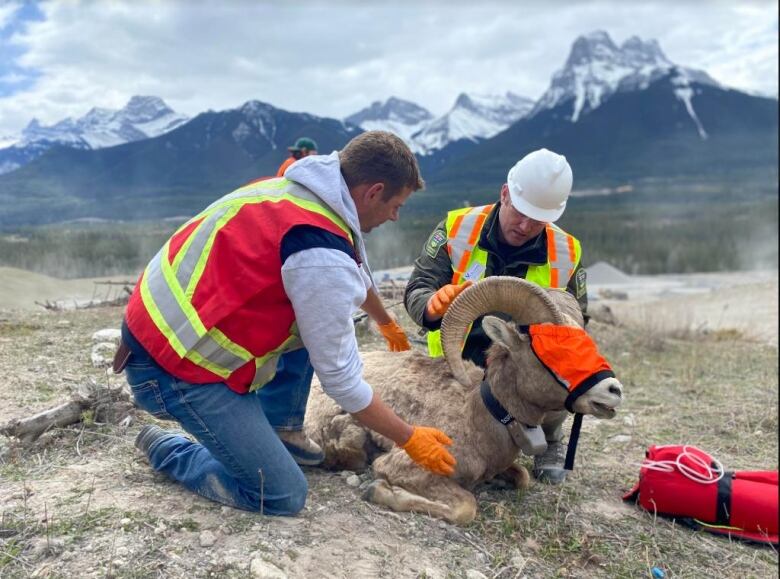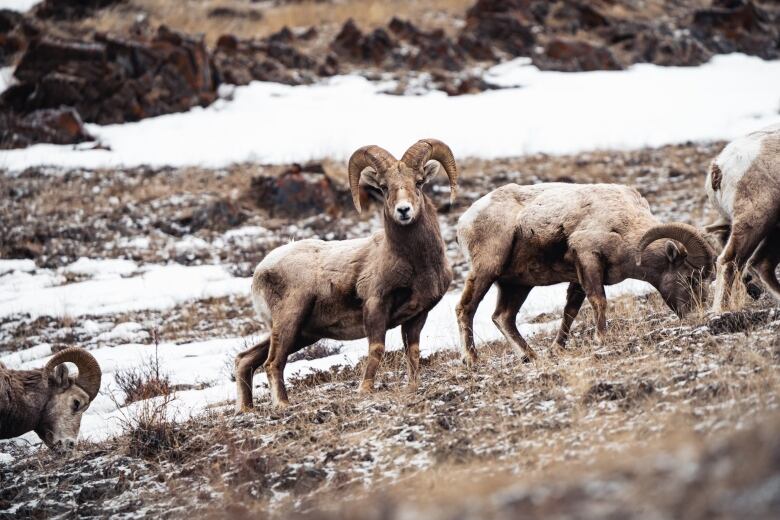Culling of bighorn sheep near Diamond Valley, Alta., sparks call for protective regulation
A pneumonia outbreak within small herd of bighorn sheep near Diamond Valley led to culling of the animals

The president of a wildlife foundation meant to protect a vulnerable species of wildlifein Alberta is calling for stricter regulations after a herd of bighorn sheep contracted a deadly illness.
Last month, a pneumonia outbreak within a small herd of bighorn sheep near Diamond Valley, Alta., led to a culling of the animals. According to the province, several of the dead sheep tested positive for the respiratory illness.
Five of the six had visual evidence of pneumonia, and mycoplasma was confirmed in three samples. Results are pending on the remaining sheep.
"Failure to contain or remove an infected herd places all neighbouring herds at considerable risk," the province said in a statement. "A timely response was key in mitigating risk of broader infection."

They added that on March 14, the six bighorn sheep still alive in the herd were humanely euthanized and delivered to a diagnostic lab for examination, noting that thedecision to move forward with disease control was based on field and lab evidence that an outbreak was underway.
Kathreen Ruckstuhl, a professor of biology at the University of Calgary, said that Fish and Wildlife should have consulted with scientists.
"Also consult with the public, they should include First Nations because they're guardians of the land," she said."There should bea discussion about what are the best steps to take and there's a lot of knowledge out there."
She said that in parts of the United States and in B.C. people have dealt with this disease and there are specific programs in place for testing and treating.
Matt Mellon, president of the Alberta chapter of the Wild Sheep Foundation, said culling the animals was the correct decision to avoid more spread, butmore rules could've preventedthe problem to begin with.

Mellon said enforcing regulations like having healthy farm flocks of domestic sheep where they are routinely tested and removed if they are positive, and/or not allowing private ownership of domestic sheep in sensitive areas of sheep management in the province could be an answer to the problem.
"I don't want to point fingers at our domestic producers. I don't think any of them want this either," he said.
"It's just somewhere we lack traction with regulation and we want to work with all of them to ensurethe healthy sustainability of both domestic sheep farming and our wild sheep."
"That's the only solution to this," he said. "As polarizing and emotional as it is when we talk about having to euthanize bighorn sheep, the bigger issue is that this is a man-made problem.This is this is something that we brought to these bighorn sheep in farming domestic sheep in the area."
With files from Paula Duhatschek












_(720p).jpg)


 OFFICIAL HD MUSIC VIDEO.jpg)
.jpg)



























































































